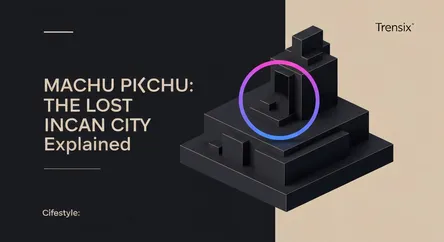Lifestyle
Machu Picchu: The Lost Incan City Explained

Discover Machu Picchu, the mysterious 15th-century Inca citadel in Peru. Learn why this UNESCO World Heritage site is a top travel destination.
What is it?
Machu Picchu is a 15th-century Inca citadel, perched high in the Andes Mountains in Peru. Often referred to as the "Lost City of the Incas," it's one of the most famous and well-preserved archaeological sites in the world. This UNESCO World Heritage site is renowned for its sophisticated dry-stone walls that fuse huge blocks without mortar, and its breathtaking panoramic views. Built for the Inca emperor Pachacuti, its exact purpose remains a mystery, with theories ranging from a royal estate to a sacred religious site.
Why is it trending?
The allure of Machu Picchu is timeless, but its popularity continues to soar due to social media visibility and its inclusion as one of the New Seven Wonders of the World. Travelers are drawn to its mystical atmosphere, stunning sunrises over the mountains, and the physical challenge of hiking the Inca Trail. The combination of historical intrigue, incredible engineering, and dramatic natural beauty makes it a bucket-list destination for adventurers, history buffs, and spiritual seekers alike.
How does it affect people?
Visiting Machu Picchu often has a profound impact, leaving people with a sense of awe and a deeper connection to history and nature. The journey itself can be transformative. Economically, it's a vital driver for Peru's tourism industry, supporting countless local communities. However, this popularity also brings challenges. The site faces threats from over-tourism, which affects both the ancient structures and the local environment, prompting authorities to implement stricter visitor limits and conservation measures to preserve its legacy.